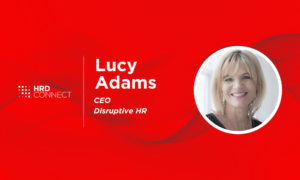How to recognize your top-performing employees
- 6 Min Read
What is the link between performance management and recognition, and how can People Leaders crack it? Sophia Lee, backed by Culture Amp’s Senior People Scientists, explores the secrets of recognizing your brightest and best.
- Author: Sophia Lee
- Date published: Oct 14, 2019
- Categories

Scroll down to register for free to Culture Amp’s amazing new webinar series, hosted by Culture Amp’s Senior People Scientists.
Check out Culture Amp’s latest ebook, 20 essential employee engagement questions.
Recognition is a powerful tool when it comes to employee performance. When done correctly, a thoughtful recognition program has the power to boost critical metrics such as engagement and productivity levels. We recently co-hosted a webinar with our friends at Blueboard and Mimecast to explore this topic in more depth. In this article, we’ll examine the relationship between performance management and recognition and share tangible tips from our webinar on how to reward your top-performing employees.
The relationship between performance management and recognition
We’ve collected insights from over 2,500 customers on our platform. What this data, along with peer-reviewed research, revealed is that if employees aren’t engaged at work, they’re unlikely to perform to their potential. And Culture First companies know it’s not enough to simply measure engagement and assign performance ratings. We must also use this data to develop strategies that will boost engagement and, in turn, enable people to perform to the best of their abilities.
To identify what these potential strategies should focus on, we looked at thousands of data points and discovered that rewards and recognition are among some of the strongest drivers of engagement. This was true across both industry and geography. Our research also showed that this need for recognition is especially prevalent amongst the highest-performing employees.
Knowing this, it’s clear that recognition is one of the keys to driving important employee metrics. But how exactly do you go about recognizing your employees effectively – especially when it comes to high-performing individuals? We dive into this question in the next section.
Tips to recognize your high-performing employees
In the webinar, we discussed a variety of tactics that can help organizations more effectively recognize and reward their high-performing employees. Here are a few of the top tips shared by our partners:
1. Diversify your levels of recognition
There are three layers of recognition. The first is day-to-day recognition, which should be accessible to all employees, and usually comes in the form of verbal praise. For instance, at Culture Amp, we use a Slack bot to give “props” to Campers who are doing great work. It’s a lightweight way to spotlight a colleague’s contributions and also aligns with one of our company values to “learn faster through feedback” by allowing us to give real-time feedback in the form of recognition.
The second layer is informal recognition, which is usually given to 25% to 30% of employees. Spot recognition is an example. It’s a one-off reward given to employees who produce particularly stellar results on a project or for another noteworthy contribution. It can also be rewarded to employees who do a great job of amplifying company values.
Finally, the third layer is formal recognition, which is only available to the top 5% to 10% of your top-performing employees. These can take the form of a structured sabbatical program or any other extra special reward, such as the experiential gifts Blueboard offers, for employees who are truly at the top of their game.
It’s important to diversify your recognition offerings with all three types described above. Not only does this allow everyone at the organization the opportunity to be recognized, but it also clearly distinguishes between your truly top-performing employees from the rest.
2. Use data to analyze outcomes
It’s easy to assume your recognition efforts are working. But you don’t actually know until you measure the outcomes. This is where our platform comes in. With our surveys, you can design questions around how your reward and recognition programs worked for the employees and to gauge their engagement levels as a result. You can also make comparisons with demographic slicing to identify where certain types of programs had the most impact.
This is critical data because it’s proof that your investments are moving the needle on business outcomes. As HR and people leaders, these are the types of data points you’re expected to bring to the table to showcase the effectiveness of your programs. If you can tie your recognition program to increased engagement, cost savings, or lower attrition, you’re also more likely to have additional budget approved and be able to reward your top-performing employees in an even bigger way the following year.
3. Adopt a “growth” mindset for performance
Finally, it’s important to adjust our mindset around recognizing high-quality performance. You may have noticed that, throughout this post, we only use the phrase “top-performing employees” instead of saying “top performers.” The reason for this is because the latter phrase sounds like a fixed trait. As if some employees are naturally born being top performers, while others are not.
We prefer to take a “growth” mindset approach and believe every employee has the potential to be a top-performing individual if given the right opportunity. It’s also unfair to expect high-performing employees to always be producing the best results. Everyone goes through highs and lows at work, and your recognition programs should be flexible enough to acknowledge this reality. You can do this by making it very clear by setting expectations around what type of performance leads to recognition. And ensure that every employee has the tools, resources, and support they need to meet those expectations.
With the right recognition program in place, you can make a dent in your employee engagement and performance levels. Simply take these tips into account to design a program that’s meaningful, impactful, and customized to your employees’ needs. And don’t be afraid to get creative with your recognition ideas!
To see the full webinar recording, you can check out this recap on Blueboard’s blog.
Register for free to Culture Amp’s webinar series, hosted by Culture Amp’s Senior People Scientists. Webinar topics include:
-
Thinking About Performance Management from the Employee’s Perspective
-
Building a Culture First Performance Management System
-
Optimising the Manager-Employee Relationship








